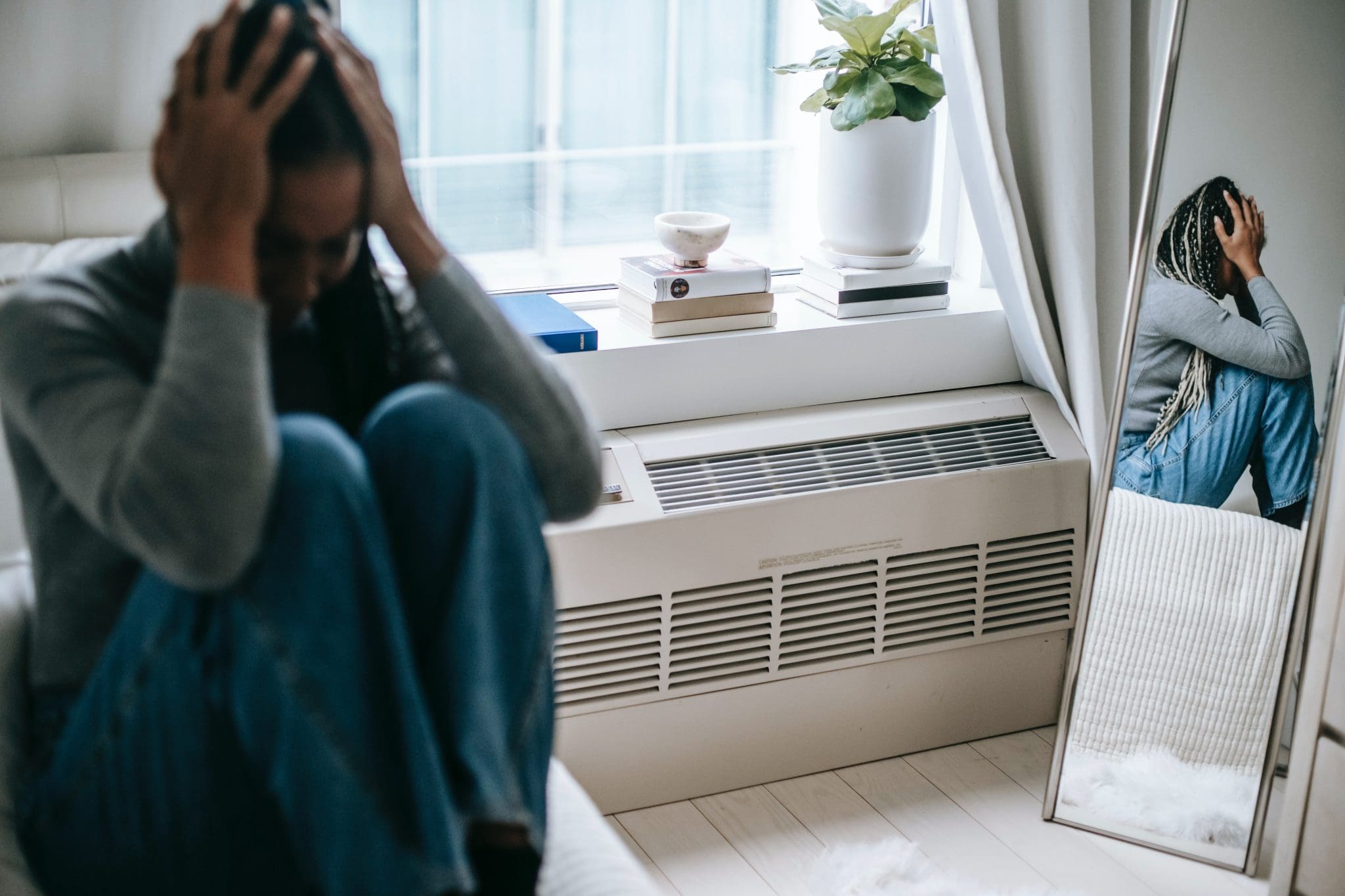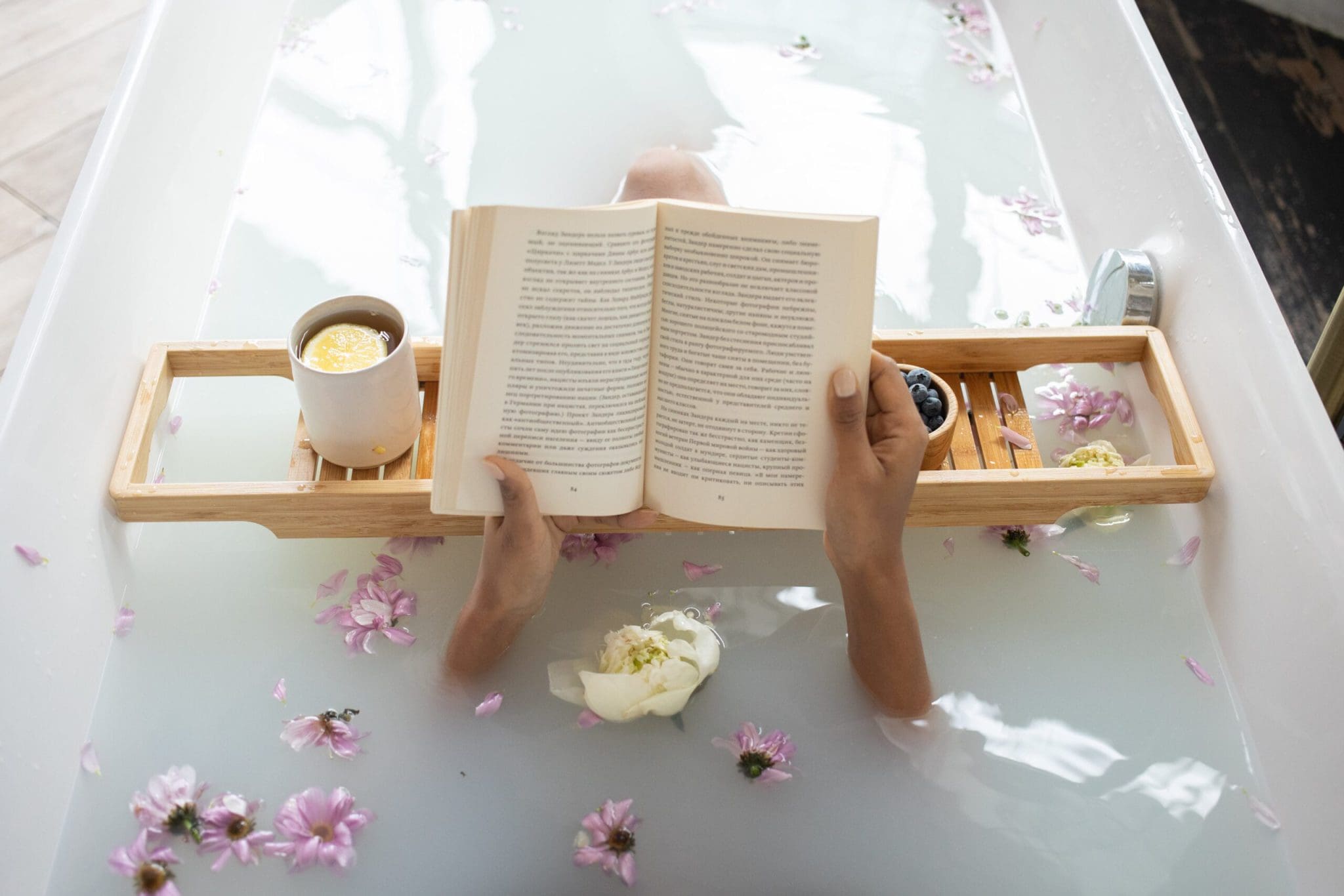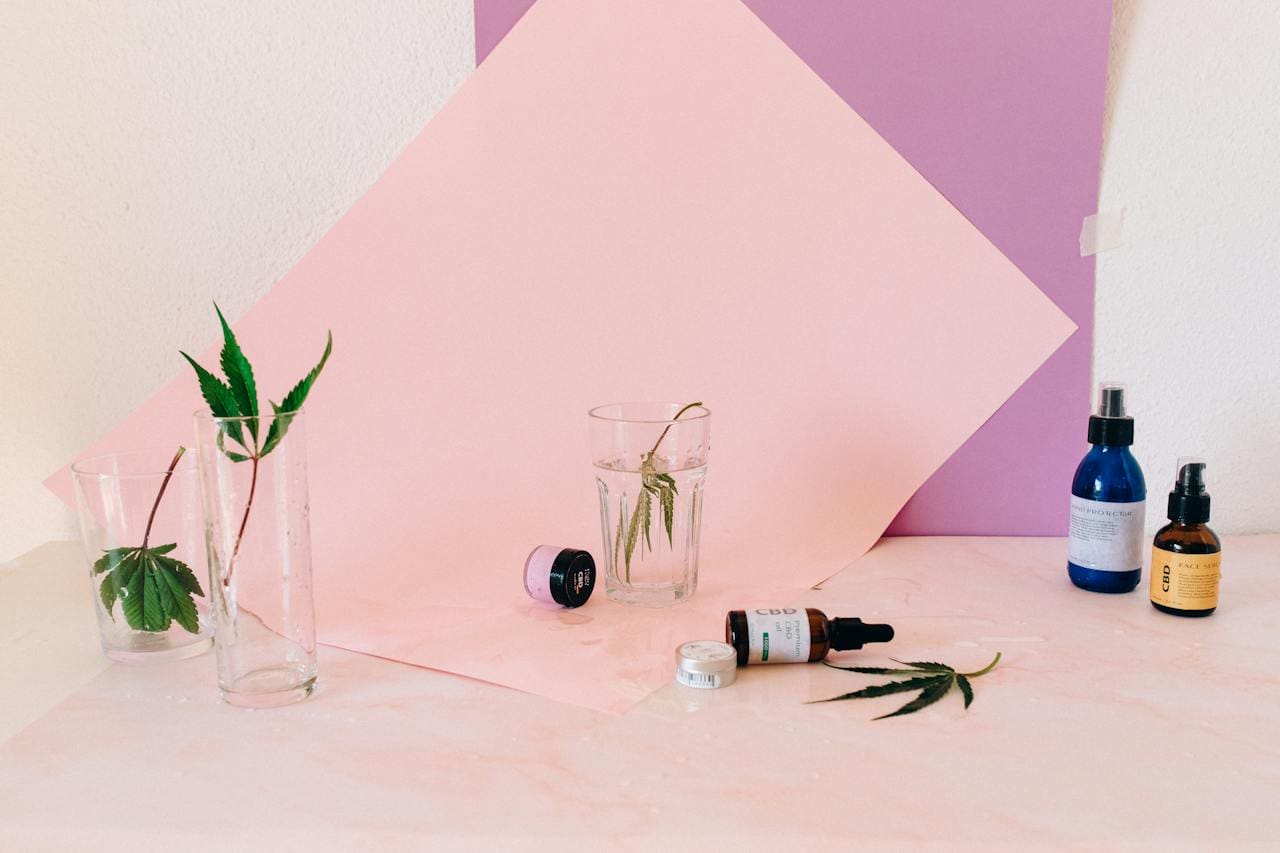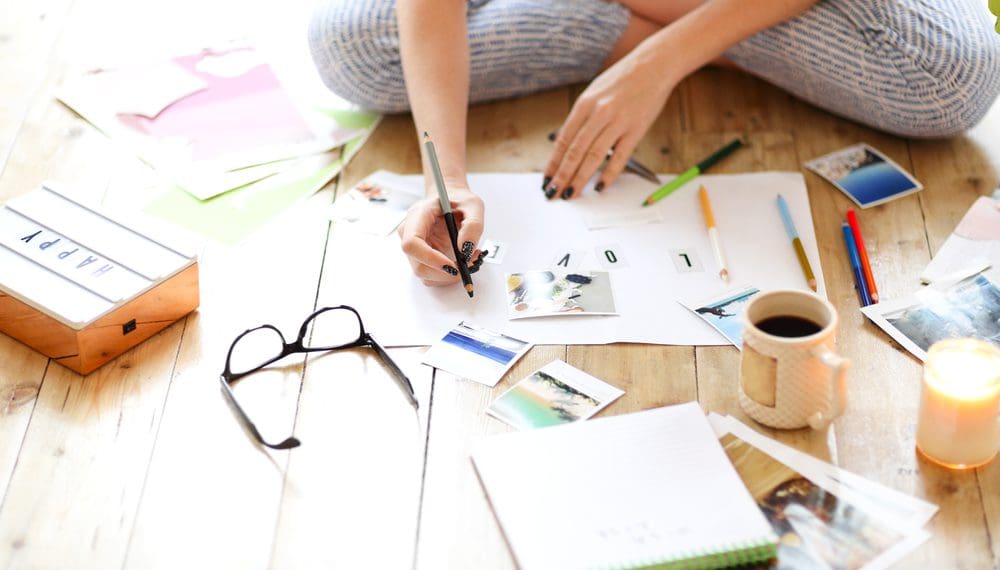Full Disclosure: Clicking on these links could mean a tiny commission for me, at no extra cost to you.
The idea of making a vision board might have you thinking about glue sticks and magazine clippings, but it’s so much more than an arts-and-crafts project. Vision boards are like giving you quick, VIP access to achieving your dreams. A vision board transforms your goals into something tangible, something you can see and feel every day. Whether it’s landing your dream job, prioritizing self-care, or finally being able to manage your anxiety with tools like fidget rings and crystals for healing, this creative process keeps your aspirations front and center. Ready to turn your big dreams into reality? Let’s dive in!
Advertisement
💚 Ready to Start Healing?
Therapy can change lives — and BetterHelp makes it easy. Get matched with one of 20,000+ licensed therapists and begin your journey from the comfort of home. Services start at just $65/week — no waiting rooms, no commute.
What is a Vision Board?
A vision board is basically just a visual representation of your goals, aspirations, and intentions. It’s a snapshot of your dreams, helping you bring your goals to life through visualization, images, words, and symbols that hold deep meaning for you. The theory is that, when you see your goals displayed visually, they feel more real, more achievable, and always within reach.
But it isn’t just a theory. Science has come in to prove that vision boards do actually work.
How Vision Boards Work
Research shows that visualization can significantly enhance goal achievement. When you constantly see representations of your goals, your brain reinforces the belief that they’re attainable. This process boosts your confidence and motivation while naturally aligning your actions to bring those goals to life. It’s like training your mind to recognize and seize opportunities, all while keeping your focus clear and your energy centered on what truly matters.
The Science Behind Vision Boards
Vision boards are popular tools for goal setting and manifestation, and their effectiveness is often linked to psychological and neuroscientific principles. Here’s a breakdown of the scientific concepts that support the use of vision boards:
1. Visualization and Mental Rehearsal
Studies in neuroscience have shown that visualizing a goal or action activates the same brain regions as physically performing that action. For example, athletes use mental rehearsal to improve performance.
When you repeatedly visualize your goals on a vision board, it strengthens the neural pathways associated with those goals, making them feel more achievable.
2. The Reticular Activating System (RAS)
The RAS is a network of neurons in the brain that filters sensory input, helping you focus on what’s important. By placing specific goals on a vision board, you’re priming your RAS to notice opportunities and resources aligned with those goals. This increased awareness helps you take actionable steps toward achieving them.
3. Goal Setting and Motivation
Setting clear, specific goals increases motivation and performance. Vision boards often feature highly visual and specific representations of goals, which can make them more tangible and motivating. For example, the Locke and Latham’s Goal-Setting Theory highlights that challenging and specific goals lead to higher performance compared to vague or abstract ones.
4. Emotional Resonance and Positive Reinforcement
Visual stimuli associated with personal goals can evoke positive emotions, which reinforce motivation and commitment. As such, seeing your dreams visualized daily can help maintain a positive emotional state and reduce feelings of doubt or fear.
5. Cognitive Behavioral Techniques
Cognitive Behavioral Therapy (CBT) often uses visualization and affirmations to reframe thought patterns and reinforce positive beliefs. Creating and using a vision board can help shift negative self-talk toward more empowering, goal-focused thoughts.
6. Behavioral Activation
Writing down or visualizing goals increases the likelihood of taking action. A 2015 study by Dominika Stasiuk and colleagues found that imagining future outcomes led to increased goal-directed behavior. As for vision boards, they can serve as daily reminders to take small, consistent actions toward achieving the desired outcomes.
The Mental Health Benefits of Vision Boards
Vision boards aren’t just for achieving goals; they’re also great for nurturing your mental health. By surrounding yourself with positive imagery, affirmations, and reminders of what brings you joy, vision boards can help shift your mindset, reduce stress, and inspire emotional resilience. They provide a visual sanctuary where your dreams and self-care priorities come together, offering comfort and motivation even on the toughest days.
1. Cultivates Optimism
Regularly viewing affirming images and quotes can help redirect negative thought patterns, encouraging a more hopeful mindset.
2. Provides Stress Relief
Crafting a vision board is a soothing, creative outlet that can shift your focus away from daily stressors, offering a mindful escape.
3. Inspires Growth
A mental health vision board offers gentle reminders to rest, reflect, and nurture your emotional well-being.
4. Encourages Mindful Action
When you frequently interact with symbols of your goals, you’re more likely to notice opportunities to act on them.
How to Create a Vision Board That Works
Making a vision board can be as simple as tossing together a collage. However, if you really want to experience the benefits of vision boards, it’s all about creating a focused and meaningful guide or representation of your goals. By being intentional with your design and including elements that truly resonate, you can craft a vision board that inspires action and keeps you motivated throughout the year.
Let’s explore how to make one that genuinely works for you!
1. Be Specific With Your Goals.
Take a moment to reflect on your desires. Break them into categories like:
- Personal Growth: Improving mental health or self-confidence.
- Relationships: Building meaningful connections.
- Health: Establishing habits for physical, mental and emotional balance.
The more detailed your goals, the easier it is to visualize them. Instead of general ideas like “be healthier,” focus on specifics, such as “exercise three times a week” or “cook homemade meals five days a week.”
Then, write down these goals, prioritizing what feels most important and achievable. Remember, simply writing down your goals increasing your chances of achieving them by 40%.
2. Gather Meaningful Materials
Whether you’re creating a physical or digital board, choose elements that truly resonate:
- Images and Quotes: Search for visuals and affirmations that spark emotion.
- Creative Supplies: Use washi tape, markers, or decorative paper to add personal flair.
If you’re more of a digital creator, you can use apps like Canva or Pinterest to design a board that’s portable and easy to update.
3. Build Your Board with Purpose
Arrange your items thoughtfully:
- Group similar goals into sections for clarity.
- Layer and overlap elements to create depth and make your board visually engaging.
- Include powerful, concise affirmations like “I choose calm” or “I am capable.”
4. Make It Visually Appealing
The more you love looking at your vision board, the more likely you are to use it. Use colors, layouts, and designs that make you feel happy and motivated. Consider overlapping images, using decorative elements like stickers, or even adding drawings or doodles.
5. Focus on the Present and the Future
Frame your goals in the present tense, as if you’re already living them. For example, instead of “I want to run a marathon,” write, “I am a marathon runner.” This subtle shift helps train your brain to believe in the reality of your goals.
6. Keep It Changing
Leave space on your board to add new goals or track progress throughout the year. This makes your vision board a living, evolving tool rather than something static.
7. Place It Where You’ll See It Daily
A vision board only works if it’s consistently in your line of sight. Hang it somewhere prominent, like your bedroom, workspace, or even use a digital version as your phone or desktop wallpaper. If you’re using a digital vision board, save it as your background image on your phone or take some time to go in and view your vision board every day.
8. Pair It with Actionable Steps
A vision board is most effective when it’s paired with actionable steps. For every goal, write down one or two actions you can take right now to move closer to it. For example:
- Goal: “Improve mental health.”
- Action: Dedicate 10 minutes daily to journaling or meditating with worry stones.
Ready to Turn Your Vision into Reality?
Visualization is powerful — but action is where the magic happens. GoalsOnTrack is your all-in-one tool for setting, tracking, and achieving the goals that matter most. With features like habit tracking, vision boards, and progress journals, this software helps you turn big dreams into daily steps.
You’ve imagined it — now it’s time to make it real.
How to Create a Vision Board for Mental Health
1. Focus on Self-Care
Add visuals and quotes that remind you to prioritize rest, mindfulness, and relaxation. Include tools like worry stones or calming images of nature.
2. Include Positive Affirmations
Positive statements like “I honor my emotions” or “I am stronger than my struggles” can shift your mindset over time.
3. Highlight Progress, Not Perfection
Include small, attainable goals to remind yourself that every step counts.
4. Use Meaningful Objects
Incorporate items that ground you, such as crystals for healing, fidget rings, or small mementos tied to positive memories while looking at your vision board.
Final Thoughts on Vision Boards
Creating a vision board is a simple yet profound way to clarify your goals, embrace positivity, and stay focused on what truly matters. By pairing it with tools like spinner rings, crystals for anxiety, and meaningful affirmations, you can amplify its impact and start living with greater intention.
This year, don’t just imagine your goals; see them, feel them, and let them guide your actions every day.
Additional Resources
At Anxiety Gone, we believe in healing together. We’ve partnered with trusted wellness organizations to bring you the most effective tools, insights, and support. Some links may earn us a commission — always at no extra cost to you.
Join The Club
Connect with our private self-care community for daily support, exclusive tips, and inspiration. Join us today
Talk Therapy
Get matched with licensed therapists online through BetterHelp and begin your healing today. Start now
Hims/Hers
Receive personalized, affordable mental health care + medication from home — no insurance required. Learn more
Mental Health, Right to your Inbox
Subscribe to our newsletter for a place to rest your mental health and find ways to support your journey. Sign up
Emotional Freedom Technique
Tap your way to calm with scientifically backed stress relief. Our readers receive a 14-day free trial! Try EFT now
Mindfulness App
Access 2,000+ guided practices to support your mental health wherever you are + exclusive discount when you upgrade Try it
Online Breathwork
Experience calm and reset your nervous system with guided sessions and receive your first month free . Get started
Find a Helpline
If you need immediate support, visit our directory to find help near you. See helplines















































